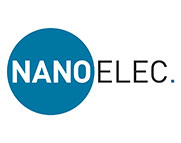Nanoelec tackles the topic of artificial intelligence (AI) from the perspective of embedded electronics. The development and expansion of embedded AI applications is triggered by the generation of large amounts of data that require local processing at component and system levels.
The aim is to provide these components with the ability to make decisions in a more decentralized, autonomous and reliable manner. Therefore, processing must be integrated close to the sensor in order to optimize the flow of data and to ensure that it remains undamaged and confidential.This allows a good trade-off between data flows from the sensor to the user and the related energy footprints of both the sensor and the central computer handling reduced amounts of data.
Digital Trust
Future connected objects will need reliable implementations of embedded AI algorithms
and security mechanisms to protect them from potential software and hardware threats.
The safe deployment and use of this technology in embedded systems requires securing the implementation of AI algorithms within these objects, as well as their communication
protocols with the outside world. Researchers from academic laboratories and industrial teams are working together within the Nanoelec/Pulse program to implement and deploy AI algorithms, in
particular machine learning algorithms embedded in IoT components. With regard to the safety of autonomous vehicles, program teams are focusing on the validation of AI systems for mobility/vehicles. The issue of evaluating and validating the effectiveness of these technologies is one of the last central barriers holding back the adoption of embedded context capture technologies. Technological research in this area is therefore a major challenge for access to the autonomous vehicle market.
Smart Imagers
Imaging is one of the three main fields that use AI. The aim is not only to achieve better image quality, but also to extract relevant data from the image, taking account of the environment, the object and the scene (potentially across a range of lighting conditions), and knowledge of the context.
The main objective of the Nanoelec/ Smart Imager program is to evaluate the advantages of using 3D-stack technology to integrate the processing of artificial intelligence into the third layer of an image sensor. The research teams are focusing on developing generic AI building blocks and the associated
processing as well as on exploring the impact of these blocks on low-energy imager architectures.
Training design
In collaboration with the MIAI institute (Idex Université Grenoble-Alpes), the Nanoelec/Chif program developed and digitalized the module entitled “Introduction to embedded artificial intelligence”. Design of the module was done in 2021. It has been tested in Elise plateforme in 2022. The learning capsule contains theory and test sequences in the form of short videos. It is aimed at student in engineering or management curricula as well as professionals fromthe microelectronics industry. It introduces the learners to embedded artificial intelligence (for example, image recognition or identification of spoken keywords) and is able to qualify and quantify the limits of this technology. 2022 was also the time for the Mission ABC capsule dedicated to a public audience. Using a technological solution integrating an image sensor, and artificial intelligence, the teams participating in the challenge have to apply the ABC Story approach independently to create a video expressing responsible behavior and stimulating the intention to imitate it. The action aims to study how to use new solutions as a responsible citizen.
Application demonstrators for imagers
Teams involved in the Nanoelec/System Lab initiative define, develop and test cases using embedded AI technologies that are integrated into or associated with image sensors. The project aims to develop functional demonstrators and explore new applications scenarios. Merging the data from optical sensors is based on artificial intelligence solutions in order to exploit the pertinent data. AI is usually developed specifically for the given use case. The System Lab teams are looking to identify the generic added value of AI, independently of the use cases.





